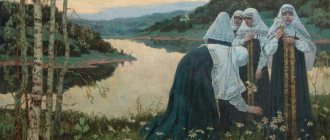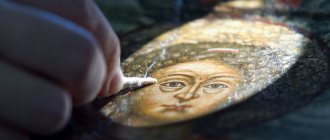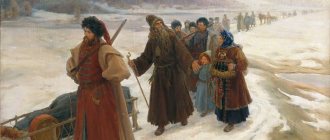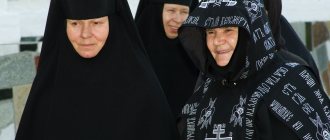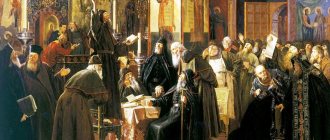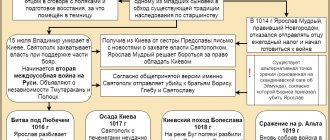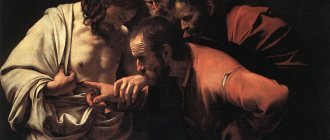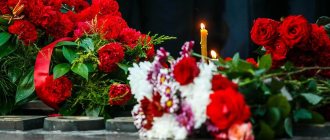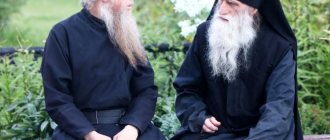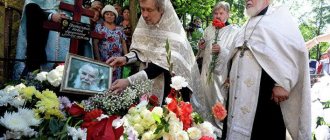Wars of monks against foreigners
One of the most striking pages in the military history of Russian monasticism were the events of 1581, described in the “Tale of the Pskov-Pechersky Monastery.” The monks had to fight with the soldiers of the Polish king Stefan Batory, who was besieging Pskov. It is noteworthy that the monks were the first to attack the Lithuanian detachment, which was accompanying carts with looted property and prisoners. “When they reached the Pechersky Monastery, then the monastery people rushed at them and drove them away; All their property was taken away and brought to the monastery,” said the chronicler. The inhabitants of the monastery repeated a similar sortie the next day, and among the captured trophies there was even a live camel. Having learned that more than 30 Poles, Hungarians and Germans were being held captive in the Pskov-Pechersk monastery, the king sent an army to its walls on October 29 under the command of the governors Ketler and Farensbach. On the Russian side, the defense was led by military commander Yuri Nechaev. The foreigners managed to break through the fortress wall and break into the monastery. The priests, monks and “ordinary people” of the monastery (workers and local villagers), having created a prayer service to the icon of the Dormition of the Most Pure Mother of God, “became indestructible, like Mount Zion.” The battle lasted the whole day, and as a result, the Polish-Hungarian detachment had to retreat. The monks captured Voivode Ketler, and Farensbach was wounded. The military leader Bornelissa (Burnamissa) sent by the king also failed to take the monastery. During the enemy attacks, the monastery lost more than 40 people killed and wounded. For foreigners, the participation of monks in the war was something unusual. The Great Crown Hetman Jan Zamoyski, sent by Stefan Batory for negotiations, wrote to the Pskov-Pechersk abbot Tikhon that his monks, “forgetting about their monasticism, flooded the temple of the Lord and the holy place with blood.” However, the brethren themselves were confident that their cause was just. According to legend, during the battle the enemies saw God's help over the monastery - “many warriors in white robes.” Again, the inhabitants of the Pskov-Pechersk monastery had to change their rosary beads to swords 30 years later, during the Time of Troubles. On April 27, 1611, the interventionists of Hetman Khodkevich fired at the monastery from cannons. In retaliation, the monks and laymen, having prayed, launched a foray into enemy fortifications, killed several Poles and captured prisoners. According to the text “Tales of the Invasion of Foreigners on the Pskov-Pechersky Monastery,” many miracles occurred during the siege, which lasted until May 11. During the Time of Troubles, the Trinity-Sergius Lavra also withstood a 15-month siege. But the Joseph-Volokolamsk Monastery was not able to withstand the pressure of the enemy.
Monastery named after Krupskaya
This amazing story may seem incredible. But that’s how it was: in the village of Zakharyino, Yaroslavl region, for more than 10 years under the guise of an agricultural commune named after. Krupskaya operated a secret monastic community.
It all started in 1921, when, with the blessing of Archimandrite Nikon (Chulkov), abbot of the Pavlo-Obnorsky Monastery, six young nuns settled in Zakharyin with the intention that over time their community would grow into a full-fledged monastic monastery.
However, the Soviet order did little to promote this prospect. Therefore, the plans of the archimandrite and his charges were somewhat modified. It was decided to lead a monastic life in secret, waiting for the fall of the godless government. The community was registered as an agricultural artel, while its internal life was organized strictly according to the monastic charter. The number of the team grew rapidly. By 1930 there were already more than 100 people in the community. By this time it was renamed the commune named after. N.K. Krupskaya.
The novices-communars worked conscientiously. In addition to agricultural work, many girls mastered the professions of masons and carpenters. The community had a brick, tar and tannery, fulling and rolling, sewing and shoe workshops, a forge and a windmill. The nuns cut down the forest, uprooted stumps, and sowed grain in the cleared fields. The community had a vegetable garden with greenhouses and a beautiful garden.
The monastery's confessor, Archimandrite Nikon, came to the village secretly, nourished, instructed, and performed divine services.
Good work brought wide fame to the commune. She was awarded awards at all-Union shows and enthusiastic publications were dedicated to her. “The Krupskaya Women’s Agricultural Commune,” said one of the central newspapers, “is the most striking example of the heroic struggle of a working peasant woman under the leadership of the Communist Party for her emancipation.”
However, the secret still became clear. At the end of the investigation in 1932, many nuns of the community were sent to camps, and nun Anna (Blagoveshchenskaya) was shot after some time.
But the most striking thing is that, despite the repressions, it was not possible to completely destroy the community. The remaining members of the liquidated commune were included in the neighboring collective farm, but they continued to lead a joint monastic lifestyle and a separate household. The collective farm was later abolished, but the community continued to live. And she lived until the early 1990s, surviving Soviet rule.
Military significance of the garrison of the Solovetsky Monastery and the abbot-voevoda
The history of the Solovetsky Monastery, which was actually the main outpost of the Russian state on the White Sea, is considered to be the most eventful with military events. A military garrison on Solovki appeared after 1571, the number of archers reached 1000. The abbots themselves acquired cannons and built fortifications. Thanks to this, the Solovetsky Monastery successfully repelled the onslaught of the Swedes in 1582 and 1611. “The Solovetsky monks became so familiar with military affairs that they found it possible to ask Tsar Mikhail Fedorovich no longer to appoint special governors to the Sumy fort to manage and command the monastery and “arrival archers”, but to leave this matter to the Solovetsky abbot and the brethren,” wrote church historian Archpriest John Syrtsov. — In 1637, the last governor, Timofey Krapivin, handed over all written files, prison keys, and all the weapons to the Solovetsky abbot Bartholomew and went to Moscow forever. Now the Solovetsky rector has literally become the “northern governor.” Since 1654, due to the Swedish threat and the small number of archers, the monks themselves had to learn the art of war. A written military “schedule” appeared on Solovki, where responsibilities were distributed among 425 monks placed “under arms”. The elders and their henchmen were “assigned” to different towers with cannons. As a result, the monks not only learned to wield weapons, but also “to a certain extent adopted the spirit of military courage and courage.” And given the religious fanaticism characteristic of many of them, warrior-monks who were not afraid of death were a formidable force. However, instead of fighting the foreigners, the monks soon turned their weapons against the royal archers. Not accepting the reforms of Patriarch Nikon, the Solovetsky Monastery rebelled, and from 1668 to 1676 successfully defended itself against Moscow troops. Only with the help of a 10,000-strong army did voivode Ivan Meshcherinov finally manage to take Solovki. At the same time, almost all the schismatic monks died - out of 700 inhabitants of the monastery, only 14 people survived.
Ignatius and Ignatius
In the 20s of the last century, the famous Vysoko-Petrovsky Monastery in the center of Moscow was closed, and its buildings housed a mechanical plant, a gym, communal apartments, a foundry and even a hat factory. It seemed that monastic life had left here forever. But it turned out differently.
Surprisingly, a new spiritual center of the capital immediately appeared here. True, underground. The few remaining monks huddled in some closets around the monastery, performed divine services in the surviving nearby churches, and then in premises poorly suited for services.
But soon they received powerful reinforcements in the form of a whole group of monks and elders from the Zosima Hermitage, which was closed at the same time in the Vladimir province. The Zosimov elders have always attracted pilgrims, and when they found themselves in the center of Moscow, many believers, including young people, flocked to them. Secret communities began to be created and secret tonsures were performed.
At the same time, the elders suggested that the new monks continue their studies and work in the world and treat this as monastic obedience; they advised them to “be a monk in the heart” and hide their monastic names from outsiders. The robes and hoods issued during tonsure were worn only within one’s own circle and kept with great secrecy.
In 1935, they tried to destroy the secret communities: many of their participants and spiritual leaders were arrested, including the most famous, Schema-Archimandrite Ignatius (Lebedev), now canonized as a holy new martyr. He was sent to Chuvash camps, where he soon died.
Among the many spiritual children of Father Ignatius was a young student at Moscow State University, Valentina Puzik. The elder tonsured her into the ryassophore (preliminary degree of monasticism) with the name Barsanuphius. The next tonsure - into the mantle - took place after the death of Father Ignatius. But at the same time, in memory of her confessor, Valentina received a new name. She became Ignatius. And the life of secret communities continued even after the defeat, arrests, and persecution. Only instead of a single monastic family, there were now separate small families headed by confessors who had survived or returned from the camps, who lived in different places in the Moscow region. And the secretly tonsured monks continued their service in the world, achieving considerable success.
Thus, nun Ignatia, known as Valentina Ilyinichna Puzik, became a doctor of medical sciences, professor, and founder of the school of phthisiatric pathologists. She received many state awards. But on the way to the Academy of Sciences, an insurmountable barrier every time arose: she was directly hinted that they knew about her secret life “in the right places” and would not be allowed membership in the academy.
But after completing her medical career in the 1970s, nun Ignatia “opened up”: she served in churches, published theological articles and books, and created liturgical texts that became part of church practice. In 2003, when she turned 100 years old, she was tonsured in her native Vysoko-Petrovsky monastery into the great schema - the highest degree of monasticism - while retaining the name of her spiritual father. And a year later, schema-nun Ignatius died.
Clergy in the Imperial Russian Army
It should also be mentioned that in the 18th century the institution of military clergy emerged in the Russian imperial army. It also included hieromonks—priests who had taken monastic vows. In the navy, they even became the predominant category of priests, since they were not related to family and could participate in long sea voyages. The “black” military clergy existed in Russia until the First World War. Some examples of the military valor of army hieromonks can be found on the pages of the magazine “Bulletin of the Military and Naval Clergy” dated October 1, 1916. At the front in the Vilna province, the regimental priest of the 276th Kupyansky infantry regiment, Hieromonk Anatoly, voluntarily went on reconnaissance on the night of July 29 in order to encourage and reassure the soldiers with his presence. However, near the enemy's wire fences, the hieromonk was seriously wounded by an explosive bullet in the thigh, damaging the bone. For this feat, the authorities nominated Father Anatoly to the Order of St. Vladimir, 4th degree. Summing up, it is difficult to disagree with the words of the Athonite monk, abbot Alexy (Prosvirnin), who sees in warrior monks a combination of “worldly warfare” and “spiritual warfare” in their highest manifestations.
Magazine: Mysteries of History No. 43, October 2022 Category: Religions of the World Author: Timur Sagdiev
Tags: Mysteries of history, Rus', Patriotic War, Orthodoxy, Battle of Kulikovo, fortress, monastery, Dmitry Donskoy, Time of Troubles, defense, Solovki
- Back
- Forward
New in blogs
Contrary to popular belief about the opposition between the Church and science, there are a large number of believing scientists in the world. Our story is about 10 of them - priests and monks who made significant contributions to various fields of science.
There is a misconception that the Church is against education and science. It was formed as a result of the existing stereotype, which says that faith and science are incompatible, since a real scientist can only trust facts, and a believer is not capable of objective thinking. There is also a common stereotype that people believe in God because they are uneducated, naive, and unable to think critically.
Actually this is not true. Since ancient times, the largest libraries and the first universities often arose at monasteries. Along with preaching about Christ, the missionaries also brought literacy to the enlightened peoples: thus, Saints Cyril and Methodius developed the first alphabet for the Slavic peoples. The first printing house of Ivan Fedorov was created with the blessing of Metropolitan Macarius of Moscow, and Ivan Fedorov himself belonged to Macarius’s inner circle and was a learned man and deeply religious. How many Christian scientists were and are there in the world who are involved in the natural sciences?
It is also noteworthy that many wonderful scientific discoveries and inventions belong to Christian priests and monks. These people understood that by doing science, we get to know God’s creation, and by learning about creation, we can get closer to knowing the Creator, just as when we learn the purpose and properties of a clay jug, we learn the design and idea of its creator, the potter.
1. Alexey Fedorovich Losev
World-famous philosopher and philologist, figure of Soviet culture. In monasticism - Andronicus.
In 1929, together with his wife, he secretly became a monk. The Losev couple were tonsured and named Andronik and Afanasia. Losev wore the monastic skufia until his death.
He rejected Marxism and the official philosophy - dialectical materialism, for which he was arrested and sentenced to 10 years in prison. He served his sentence during the construction of the White Sea-Baltic Canal, where he almost completely lost his sight.
Losev is one of the largest researchers of antiquity and the Renaissance. He translated the works of Aristotle, Plotinus, Sextus Empiricus, Proclus and Nicholas of Cusa. Year after year and volume after volume, new books by Losev on ancient aesthetics were published. His bibliography includes more than 800 works.
Abbess Seraphima (Black) 1914-1999
Soviet chemist, engineer, nun. In the world - Varvara Vasilievna Chernaya. Abbess of the Moscow Novodevichy Convent in 1994-1999.
Since childhood, she was raised in the Orthodox faith. During the Great Patriotic War, she worked as the deputy chief engineer of Moskovsky. Later she was engaged in scientific development at the Institute of Rubber Industry, where she was deputy director for 16 years. Participated in the development of space suits. Founded a new branch of rubber production - latex technology. This technology is used in the development of latex protective equipment, as well as latex pilot balloons for atmospheric sensing. With the participation of Varvara Chernaya, a spacesuit was created for Yuri Gagarin, in which he flew into space.
In 1994, Varvara Chernaya took monastic vows. She became the first abbess of the Novodevichy Convent after its return to the Church. Under her, the monastery churches were restored and their interior decoration was recreated, the monastic charter was introduced, and the icon-painting and gold-embroidery workshops were revived.
Abbess Seraphima made a significant contribution to the construction of the Church-Monument of the New Martyrs and Confessors of Russia in Butovo. It was there, at the Butovo training ground, that her grandfather, Metropolitan Seraphim (Chichagov), was killed among the thousands of executed priests. In 1997, he was glorified as a new martyr of the Russian Orthodox Church.
Saint Luke (Voino-Yasenetsky), Archbishop of Simferopol (1877-1961)
Archbishop Luke (Voino-Yasenetsky) made a huge contribution to the development of regional anesthesia, and his textbook on purulent surgery is still used today.
A wonderful Russian surgeon, Doctor of Medical Sciences, Professor. And at the same time, he is a bishop of the Russian Orthodox Church.
In Russia of his time, many even simple operations ended in the death of the patient due to improper use of anesthesia. Surgeon Voino-Yasenetsky was one of the first to develop regional, or conduction, anesthesia. Subsequently, it became one of the main methods of anesthesia.
The bishop-surgeon performed hundreds of complex eye surgeries. Cases have been recorded when, thanks to his operations and God’s help, people who were blind from birth gained sight. He advanced the world science in the field of purulent surgery. His book “Essays on Purulent Surgery” received the Stalin Prize of the 1st degree in the USSR in 1946 (despite the fact that it was written by a serving Orthodox bishop). Saint Luke himself spoke about his life and ministry in his autobiography “How I Loved Suffering.”
Alexey Alekseevich Ukhtomsky (1875-1942) hieromonk in the world, who discovered the principle of dominance in the work of the human brain.
An outstanding physiologist, scientist, researcher of the muscular and nervous systems, as well as sensory organs.
Ukhtomsky was a hieromonk in the world, a delegate of the Local Council of the Russian Orthodox Church in 1917-1918, at which the patriarchate was restored. He actively participated in meetings on reunification with the Old Believers.
In 1920, Ukhtomsky was arrested by security officers and sent to a special branch of the Cheka on Lubyanka, where he remained until January 1921. It is interesting that in prison he lectured fellow inmates on physiology. However, soon the scientist-monk was released and headed the department of human and animal physiology at Petrograd University.
Ukhtomsky’s main contribution to science is the principle of dominance he developed as a new doctrine about the functioning of the brain. This theory helps explain fundamental aspects of human behavior and mental processes. For these works in 1932, Alexey Alekseevich was awarded the Lenin Prize.
Academician A.A. Ukhtomsky
During the war, Ukhtomsky found himself in besieged Leningrad. He participated in organizing the work of scientists for defense needs, and led research on traumatic shock. A week before his death by starvation, he continued to study science and prepared a report “The System of Reflexes in an Ascending Series,” which he no longer had time to read.
Pavel Alexandrovich Florensky (1882-1937)
Priest Pavel Florensky, who was executed in 1937, even in the camps, made more than 10 scientific discoveries related to the extraction of iodine and agar-agar.
Russian Orthodox priest, theologian, religious philosopher, scientist, poet. Florensky graduated from the Faculty of Physics and Mathematics of Moscow University, was acquainted and friendly with many famous poets of the Silver Age, wrote poetry himself and was published in a number of literary magazines. Then he entered the Moscow Theological Academy and in 1911 received the priesthood.
In the twenties, he returned to studies in physics and mathematics, worked at Glavenergo, and took an active part in the development and implementation of the famous GOELRO (State Electrification of Russia) plan. At the same time he worked in the Commission for the Protection of Monuments and Antiquities of the Trinity-Sergius Lavra. In 1924 he published a large monograph on dielectrics. His scientific work was supported by Leon Trotsky, which in the thirties played a fatal role in the fate of Florensky. When the persecution began, Pavel Alexandrovich had the opportunity to emigrate, but found it necessary to stay in his homeland, realizing that he was dooming himself to arrest, camps and martyrdom.
Russian Orthodox priest, theologian, religious philosopher, scientist, poet. Florensky graduated from the Faculty of Physics and Mathematics of Moscow University, was acquainted and friendly with many famous poets of the Silver Age, wrote poetry himself and was published in a number of literary magazines. Then he entered the Moscow Theological Academy and in 1911 received the priesthood.
In the twenties, he returned to studies in physics and mathematics, worked at Glavenergo, and took an active part in the development and implementation of the famous GOELRO (State Electrification of Russia) plan. At the same time he worked in the Commission for the Protection of Monuments and Antiquities of the Trinity-Sergius Lavra. In 1924 he published a large monograph on dielectrics. His scientific work was supported by Leon Trotsky, which in the thirties played a fatal role in the fate of Florensky. When the persecution began, Pavel Alexandrovich had the opportunity to emigrate, but found it necessary to stay in his homeland, realizing that he was dooming himself to arrest, camps and martyrdom.
In the inhumane conditions of the camps, Florensky continued scientific research. This is how the book “Permafrost and Construction on It” was born, and more than 10 scientific discoveries were made related to the extraction of iodine and agar-agar in the Solovetsky camp. In 1937, Florensky was shot by a special troika of the NKVD.
Alexander Ivanovich Polovinkin (born March 8, 1937-2018)
Doctor of Technical Sciences, who headed the Volgograd Polytechnic Institute before his ordination.
Priest of the Russian Orthodox Church, rector of the Church of the Nativity of Christ in the Volgograd diocese, as well as the first vice-rector of the Tsaritsyn Orthodox University.
Doctor of Technical Sciences, Professor. From 1983 to 1988, A. I. Polovinkin headed the Volgograd Polytechnic Institute as rector. He paid great attention to the computerization of educational and scientific work, which resulted in the creation of a powerful computer center for those times, and the widespread use of personal computers began.
The most widely known work of Alexander Ivanovich Polovinkin was his repeatedly republished book “Fundamentals of Engineering Creativity”. His awards are symbolic, which mark his merits as a scientist and as a clergyman: the Order of the Badge of Honor and the Order of St. Sergius of Radonezh.
Alexander Ilyich Borisov (born October 13, 1939)
Soviet biologist, publicist and public figure, priest of the Russian Orthodox Church.
He worked at the Laboratory of Radiation Genetics of the Institute of Biophysics of the USSR Academy of Sciences. He defended his dissertation on genetics and was awarded the academic degree of Candidate of Biological Sciences.
With the blessing of his confessor, Father Alexander Men, he graduated from the Moscow Theological Seminary, and then the Moscow Theological Academy. For a long time he could not be ordained a priest due to opposition from the authorities.
In 1989, ordination finally became possible and the sacrament took place. In 1991, Father Alexander was appointed rector of the Church of the Holy Unmercenaries Cosmas and Damian in Shubin. A significant part of the spiritual children of the deceased Archpriest Alexander Men moved to this parish.
Nun Anuvia (Vinogradova)
Nun Anuvia (Vinogradova)
N.M. Vinogradova, archaeologist, world-famous orientalist, took monastic vows with the name Anuviya in 2010
Historian, archaeologist, world-famous scientist. Current senior researcher at the Russian Academy of Sciences, corresponding member of the German Archaeological Institute.
Nun Anuvia (in the world – Natalia Matveevna Vinogradova) worked for many years at the Institute of Oriental Studies of the Russian Academy of Sciences, and went on archaeological expeditions to Tajikistan. She defended her dissertation, wrote several monographs on the archaeological monuments of Tajikistan and more than 100 scientific articles.
In 2010, Vinogradova took monastic vows with the name Anuviya. For many years now she has been combining monasticism and science.
The main obedience of nun Anuvia in the monastery is the organization of construction and restoration work. Mother Anuvia, treasurer of the St. John the Baptist Monastery in Moscow, has been actively involved in its revival since the time of monasticism, for which she was awarded both church and secular awards.
9.Archpriest Kirill Kopeikin (born June 7, 1959)
Candidate of Theology and Candidate of Physical and Mathematical Sciences, Director of the Scientific and Theological Center for Interdisciplinary Research of St. Petersburg State University, Associate Professor of the Department of Theology of the St. Petersburg Orthodox Theological Academy, Rector of the Church of the Holy Apostles Peter and Paul at St. Petersburg State University.
He graduated from the Physics Faculty of St. Petersburg State University, then graduated from graduate school, defended his dissertation, and worked in the special design bureau “Integral” at the university.
After graduating from the St. Petersburg Theological Seminary, he was ordained deacon by Metropolitan John of St. Petersburg and Ladoga; on June 6, 1993, he was ordained priest by Metropolitan John.
Father Kirill writes that science and religion do not contradict each other:
“Look at the Holy Scriptures. The Apostle Paul says that our service to God is reasonable service (Rom. 12:1)... Reason is a gift of God, it is a sin to refuse it. Another thing is that everything does not come down to the mind alone. The most unexpected thing we encounter when in our study of the world we reach the fundamental level, to quantum mechanical objects, is that the objects are more like something mental than something physical.”
Sergey Vladimirovich Krivovichev (born in 1972)
Professor and deacon of the Russian Orthodox Church - Sergei Vladimirovich Krivovichev
Geologist, scientist, Doctor of Geological and Mineralogical Sciences, deacon.
Sergey Krivovichev graduated from the Faculty of Geology of St. Petersburg State University. He defended his candidate's and then doctor's dissertation. He worked at the Department of Crystallography of St. Petersburg State University as an associate professor, and is now a professor and head of the department.
Awarded a medal for young scientists of the Russian Mineralogical Society, a medal for young scientists of the Russian Academy of Sciences, a medal of the European Mineralogical Union.
Author of more than 200 articles in domestic and international scientific journals, co-author of the discovery of 25 new mineral species in Russian deposits. A new mineral, krivovichevit, was named in his honor. Specialist in the field of X-ray structural analysis, author of more than 400 structural interpretations.
In 2004 he was ordained to the rank of deacon. Sergei Vladimirovich says about his life and work: “We are deciphering the crystal structures of compounds, the internal position of atoms - in fact, we are discovering a new reality. We look where no one has ever looked. And when you see this, you can no longer imagine yourself without this hidden beauty. Such work gives intellectual and spiritual joy.
As Academician N.N. Bogolyubov said, there are no unbelieving physicists. Scientific work involves very subtle spiritual intuition. After all, in the end, science is built not on rationality, but on contemplation.”
These words of our contemporary, one of the youngest professors in Russia (Father Sergius became a professor at the age of 35), a happy father of six children, are the best answer to the question about the compatibility of science and faith.
There are many more such pundits in history.
(To be continued)
